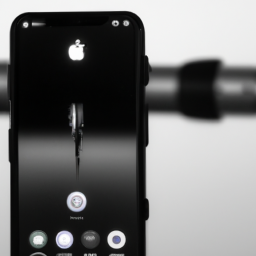Samsung’s latest flagship smartphones, the Galaxy S24 and Galaxy S24+, have generated significant anticipation among consumers. As pre-orders for these devices continue to flood in, many potential buyers are eagerly awaiting reviews to determine whether the Exynos 2400 chipset can rival the Snapdragon 8 Gen 3 that powers the Galaxy S24 and S24+. Luckily, the first set of benchmark scores and battery life figures for the Exynos 2400 variants have been unveiled by YouTube channel NL Tech, providing valuable insights into the performance and endurance of these highly anticipated smartphones. From gaming performance to CPU tests and graphics benchmarks, this article explores how the Galaxy S24, S24+, and S24 Ultra fare in terms of battery life and overall performance, offering potential customers a glimpse into what they can expect when these devices hit the market.
Exynos 2400 Variants of Galaxy S24 and Galaxy S24+ Fare Well in Battery Life and Performance
Read more about the latest articles
Introduction
Samsung’s newest flagship smartphones, the Galaxy S24 and Galaxy S24+, have been highly anticipated by consumers. Many people have already pre-ordered these devices, while others are waiting for reviews to go live before making their purchase decisions. One crucial aspect that consumers are eager to evaluate is how the Exynos 2400 variants perform compared to the Snapdragon 8 Gen 3. In this article, we will delve into the benchmark scores and battery life figures of the Exynos 2400 variants of the Galaxy S24 and Galaxy S24+, providing an in-depth analysis of their performance.
Benchmark Scores and Battery Life Figures Revealed
Thanks to the informative YouTube channel NL Tech, we now have access to the first set of benchmark scores and battery life figures for the Exynos 2400 variants of the Galaxy S24 and Galaxy S24+. NL Tech has released a video showcasing these details, allowing us to examine the performance and battery life of these devices.
Geekbench 6
In the Geekbench 6 benchmark test, the Galaxy S24 achieved a single-core CPU score of 2,131 points and a multi-core CPU score of 6,785 points. On the other hand, the Galaxy S24+ scored slightly higher with 2,139 points in the single-core test and 6,634 points in the multi-core CPU test. Comparatively, the Galaxy S24 Ultra, equipped with the Snapdragon 8 Gen 3 For Galaxy processor, outperformed both devices with scores of 2,289 points in the single-core CPU test and 7,123 points in the multi-core CPU test.
AnTuTu
Moving on to the AnTuTu benchmark, the Galaxy S24 scored an impressive 1,546,699 points. The Galaxy S24+ and the Galaxy S24 Ultra achieved scores of 1,635,230 points and 1,766,906 points, respectively. Despite the Galaxy S24+ featuring a smaller vapor chamber heat dissipation mechanism than the Galaxy S24 Ultra, it only scored 7% lower. The Galaxy S24, with its 8GB RAM and smallest vapor chamber system, scored 14% lower than the Galaxy S24 Ultra. The second run of the benchmark showed a slight decrease in scores for both the Galaxy S24 and the Galaxy S24+.
3DMark Solar Bay Ray Tracing
The Solar Bay Ray Tracing benchmark from 3DMark allows us to test the raytracing performance of smartphones. This is particularly relevant as many games now utilize raytracing technologies for more realistic graphics. Surprisingly, the Exynos 2400 version of the Galaxy S24 outperformed the Galaxy S24 Ultra in this test. The Galaxy S24 achieved a stability of 56.1%, with a best score of 8,855 points and a lowest score of 4,968 points. In comparison, the Galaxy S24 Ultra achieved a stability of 50.3%, with a best score of 8,590 points and a lowest score of 4,324 points.
3DMark Wild Life Extreme
In the popular 3DMark Wild Life Extreme graphics performance test, the Galaxy S24 scored 4,432 points as its best score, 2,348 points as its worst score, and demonstrated 53% stability. The Galaxy S24+ achieved a best score of 4,322 points, a worst score of 2,393 points, and stability of 55.4%. The Galaxy S24 Ultra, powered by the Snapdragon 8 Gen 3 For Galaxy processor, achieved the highest score among the devices with 4,931 points as its best score, 2,423 points as its worst score, and stability of 49.1%.
Battery Life Test (PCMark)
To assess the battery life of the Galaxy S24 series, PCMark conducted a test with all three devices set to a 120Hz refresh rate and 100 nits of peak brightness. The Galaxy S24 showcased impressive endurance, lasting 13 hours and 50 minutes. The Galaxy S24+ followed close behind with a battery life of 13 hours and 22 minutes. Surpassing them both, the Galaxy S24 Ultra demonstrated exceptional longevity, with a single charge lasting for 15 hours. These results indicate an improvement in battery life compared to the previous models in the lineup.
Read more about the latest articles
Comparison with Snapdragon 8 Gen 3
Based on the benchmark scores and battery life figures, the performance of the Exynos 2400 processor is nearly on par with the Snapdragon 8 Gen 3’s capabilities. The margin between the two processors is within 10%, highlighting the significant advancements Samsung has made in the design and performance of Exynos chips. With this notable improvement, the flagship Exynos 2400 processor stands as a compelling alternative to the Snapdragon 8 Gen 3.
Conclusion
The Exynos 2400 variants of the Galaxy S24 and Galaxy S24+ demonstrate commendable performance and battery life figures. The benchmark scores obtained from Geekbench 6, AnTuTu, as well as the 3DMark Solar Bay Ray Tracing and 3DMark Wild Life Extreme tests, highlight the capabilities of these devices. Furthermore, the battery life test conducted by PCMark illustrates the longevity of these smartphones on a single charge. With the Exynos 2400 processor rivaling the Snapdragon 8 Gen 3, consumers can confidently consider the Galaxy S24 and Galaxy S24+ for their next upgrade. Samsung has undoubtedly delivered a fantastic flagship lineup with substantial improvements in both performance and battery life.











